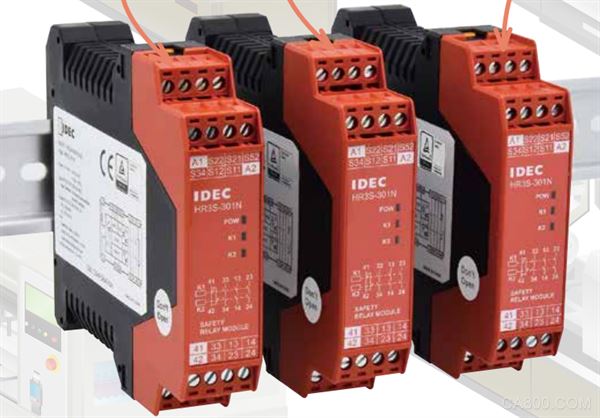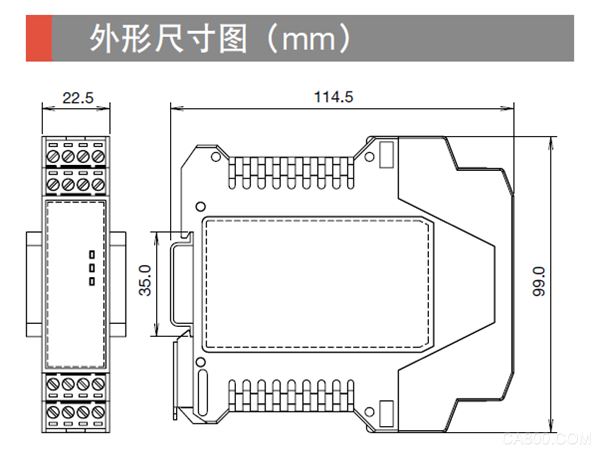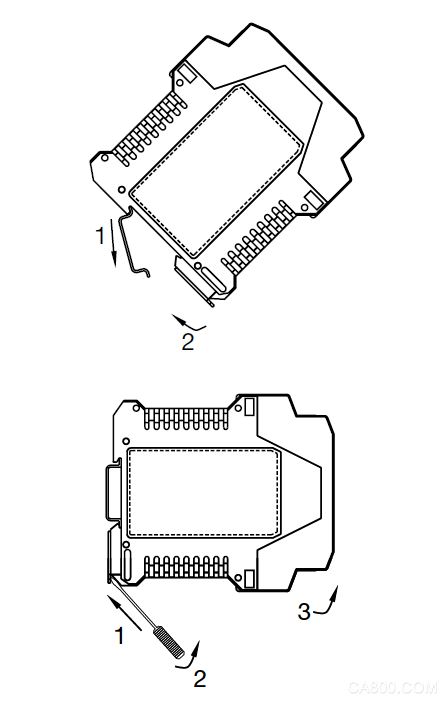Thin body uses simple safety relay to change wiring operation
A safety relay is a combination of multiple relays and circuits designed to complement each other's shortcomings, ensuring reliable operation with minimal faults. This helps achieve a high level of safety by reducing the likelihood of failures. As a result, various types of safety relays are developed to protect machinery at different risk levels, primarily aiming to safeguard operators who are exposed to varying degrees of danger.

It's important to note that a "safety relay" is not a fault-free device. Instead, it ensures safe operation even when a fault occurs. It features a forced-guided contact structure that prevents dangerous situations in case of contact welding, which is quite different from a standard relay.
Requirements for Safety Relays
In safety circuits, safety relays must meet the following three key requirements:
- When the emergency stop is released, the machine should not restart automatically.
- If there's a failure in the machine’s safety circuit, the power supply must be cut off.
- In the event of a safety circuit failure, the machine should not start again.
Use of Safety Relays
Safety relays are commonly used in the design of safety circuits that verify the machine’s safety before sending a signal to the contactor. They are widely applied in industries such as rubber, steel, automotive, machine tools, power, glass manufacturing, and plastics.
To simplify the creation of safety circuits, safety relays are often combined with other components. These combinations, known as safety relay modules, require strict monitoring of signals, high safety classification, internal fault detection, and adaptability to various environmental conditions like temperature and humidity.
To address these needs, EDC introduced the HR3S safety relay module (referred to as HR3S). This module is designed for basic safety control input and includes dual-signal monitoring functions for emergency stop switches and safety switches. It has been certified by TÃœV Rheinland and meets the performance standards outlined in EN ISO 13849-1, specifically for Safety Category 4. Additionally, it features an internal self-diagnosis system for detecting malfunctions.
The terminal block is equipped with a finger-safe design, allowing both automatic and manual reset. Its user-friendly design makes it ideal for industrial applications.
HR3S is also highly adaptable to various environments. It can operate in temperatures ranging from -20°C to +60°C without ice, and in humidity levels between 10% and 90% RH without condensation. The module also provides over-current and over-voltage protection, as well as resistance to vibration, making it a competitive choice in the market.

How to Connect HR3S

- The wiring of the safety relay module uses a removable terminal block.
- The cross-sectional area of the input side conductor must be greater than 0.5 mm², while the output side must be more than 1 mm².
- The exposed wire length should be approximately 8mm and secured with M3 screws.
- Output contacts must be connected with proper fuse protection.
- Copper conductors must withstand ambient temperatures of at least 75°C.
- Ensure the terminal block is tightened properly to prevent loosening, which could lead to malfunction or overheating. The recommended tightening torque is 0.5 Nm.
HR3S Precautions
Installation
The HR3S series safety relay modules use a 35mm wide DIN rail mounting method. They should be installed in a control box with IP54 protection rating, following the guidelines specified in GB5226.1-2008, “Mechanical Electrical Safety – Mechanical Electrical Equipment – Part 1: General Technical Conditions.â€
During installation, insert the top end of the module into the rail and push the bottom end until it is fully seated.
Disassembly

Use a screwdriver with a blade width of no more than 6mm to insert it into the metal latch located on the lower part of the safety relay module. Then, lift the screwdriver upwards and pull the metal latch down to remove the module.
Diamond Tool Equipment Spare Parts
Diamond Tool Equipment Spare Parts,Large Saw Blade Sharpening Machine,Large Diamond Saw Blade Sharpening,Bellows Cover For Testing Machine
Suzhou Mountain Industrial Control Equipment Co., Ltd , https://www.szmountain.com
